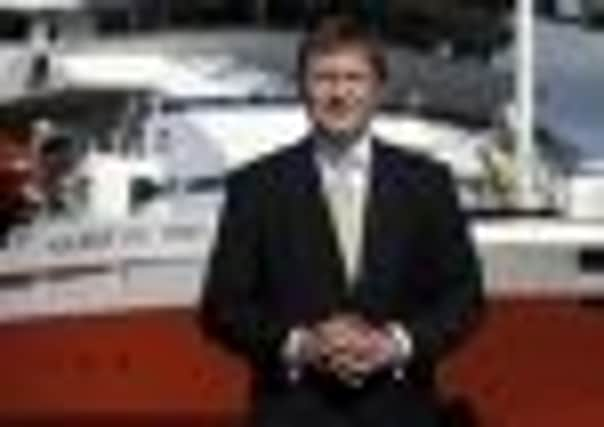Forth Ports chief says £125m wind turbine plant ‘will redefine Leith’


Charles Hammond, the port’s boss, is preparing for the arrival of the biggest catch in its recent history: a £125 million wind turbine plant to be built by Spanish firm Gamesa. It will create 800 jobs on 80 acres and, he hopes, provide a spark to build a new industry in and around Leith and its sister ports.
While Leith awaits its latest makeover, Hammond says Dundee is competing with two other locations for a renewables plant to be built by an inward investor whose identity he is sworn to protect. Another project, a foundry operator, is keen on a site in Methil.
Advertisement
Hide AdAdvertisement
Hide Ad“The supply chain will be attracted to the area. A development like Gamesa creates a cluster,” he said. “We have enough land at Leith to move things about in order to accommodate new projects.”
In the 11 years since Hammond became chief executive of Forth Ports he’s overseen the shifting character of the area, including new builds such as the Ocean Terminal shopping centre and high-rise apartments. The arrival of the Royal Yacht Britannia brought tourists, while the controversy over the now-abandoned plan for a biomass plant produced a showdown with residents.
Throughout, the port has remained a key outlet for the bulk of Scotland’s GDP, its whisky, electronics and machine components, and a point of entry for grain, salt and maize and for ships passing through.
Since Forth’s acquisition by Arcus Infrastructure Partners last year, the focus of activity around the ports has accelerated towards industry. Heading towards the top of the list is renewables, a priority growth sector for the Scottish economy and for both Leith and Dundee, two of Forth’s seven ports in Scotland.
The plans for Leith are markedly different to the gentler proposals of earlier years, which put more emphasis on creating a community of housing, leisure and retail. The property crash was a game-changer and the last land sold for housing was in 2004, creating islands of apartment blocks surrounded by vacant plots.
“The plan for Leith has changed significantly,” said Hammond, “It was a 20 to 30-year plan in which industry would be phased out and housing and retail phased in. Now we believe the best use of this land is for industry and port-related activity.”
It chimes with the demands of Arcus’s shareholders, the pension funds that invest for long-term returns. By contrast, the real estate market is dead. It is still hoped that Edinburgh’s Western Harbour housing development will be completed, but no-one is buying land for residential use, so the undeveloped acreage will remain that way either until the housing market picks up or other uses are found for it.
Renewables will be a transforming influence on the ports, where investment is now focused on building a critical mass of suppliers and turning Scotland into a centre of excellence.
Advertisement
Hide AdAdvertisement
Hide Ad“Gamesa redefines Leith as a modern industrial port and a centre for renewables,” said Hammond, who will turn a memorandum of understanding with the firm into a detailed agreement.
A successful planning application will be followed by clearance of much of the site to allow work to start on the giant factory by the middle of next year. It will create jobs in electrical and mechanical engineering, product quality testing and packaging.
“Edinburgh has never really been an industrial city, but this marks a real change,” said Hammond, whose belief in renewables is unequivocal. He sits on the Scottish Energy Advisory Board, co-chaired by First Minister Alex Salmond and Jim McDonald, principal of Strathclyde University. From their meetings, the renewables infrastructure plan emerged.
“I am an advocate of the renewables industry because it is the clearest strategy for helping the economy of Scotland,” said Hammond. “We have been working on renewables for four to five years in Dundee and we recently saw the potential at Leith, which is why we were keen to see it included in the infrastructure plan.”